A river dolphin took a tired lunge before diving into the Hooghly river next to a noisy, mammoth, crowded vessel ferrying passengers on National Waterway No. 1 (NW-1) in Kolkata. Its tail stood up stiff, flicking wildly, straight out of the water before it dived down headfirst. Such a dive indicates acute distress in dolphins. It heaved, surfacing after seven minutes, a longer interval than normal. How could we know what had happened?

The dolphin is a difficult cetacean to study; in the murky waters it inhabits, it is impossible to see the animal underwater. Just a few glimpses of surface activity are usually visible. Although it has evolved to be effectively blind in the sediment-laden Indus-Ganga- Brahmaputra river systems, it can ‘see’ using high frequency echolocation clicks. Two bony crests in front of the skull help focus the click trains it emits from its larynx. The dolphin clicks and listens all the time. The river dolphin’s ‘ear-view’ refers to understanding the potential impacts of waterways on river biodiversity from a sensory perspective, keeping an ear to the water.
SYSTEMATIC DEGRADATION
To begin finding answers, we must zoom out and travel upstream to the Farakka Barrage. Completed in 1975, this barrage was meant to halt and divert the waters of the Ganga (flowing into Bangladesh) through a feeder canal and navigation lock to flush out accumulated silt that was threatening the viability of the Kolkata port. The Farakka feeder canal was a key link of NW-1 on the Ganga, designated in 1982. The NW-1 runs for 1,620 km. from Allahabad in Uttar Pradesh to the Haldia port downstream of Kolkata. Of course, the Farakka Barrage failed to meet its objective, with the Kolkata port’s condition not improving and sediment dredging costs continuing to accumulate. The current state of Farakka’s navigation lock reveals that no lessons were learnt (See Box 1: India’s National Waterways Act of 2016).
Diese Geschichte stammt aus der February 2017-Ausgabe von Sanctuary Asia.
Starten Sie Ihre 7-tägige kostenlose Testversion von Magzter GOLD, um auf Tausende kuratierte Premium-Storys sowie über 8.000 Zeitschriften und Zeitungen zuzugreifen.
Bereits Abonnent ? Anmelden
Diese Geschichte stammt aus der February 2017-Ausgabe von Sanctuary Asia.
Starten Sie Ihre 7-tägige kostenlose Testversion von Magzter GOLD, um auf Tausende kuratierte Premium-Storys sowie über 8.000 Zeitschriften und Zeitungen zuzugreifen.
Bereits Abonnent? Anmelden

Why Children Are Needed To Help Save The World
On my very first day in India, I encountered many marvelous new customs not practiced in the United States, my home country. But the most curious by far involved trees. Here and there, alongside the roaring streets of Mumbai were rings of marigold wreathed around twisting banyan trunks like dried rays of afternoon sunlight…
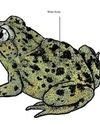
Who's Who?
Fact: all toads are frogs, but not all frogs are toads! Let’s unpack this...
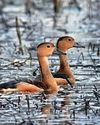
The Sea Raptor
The White-bellied Sea Eagle Haliaeetus leucogaster is one of the most common raptors along the Indian coastline. Nevertheless, the sight of this soaring, broad-winged, white and black bird of prey is nothing less than majestic
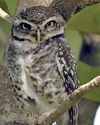
Bringing Up Bob Hoots.
While we were visiting a friend’s farm in the village of Yelachetty, near Bandipur Tiger Reserve, we found Spotted Owlets nesting on the tiled roof… and one of the chicks on the kitchen floor!

Yala, Land Of The Leopard
Yala is not only Sri Lanka’s second-largest, but also the most-visited national park in the island nation.
The Wizards Of Oz!
Australia is not only a country, but also a continent. The land down under, cut-off from the rest of the world has an abundance of unique species of native animals, birds, reptiles, insects and plants.

Scales & Tails
I was really excited and looking forward to the workshop on reptiles and amphibians at Nature’s Nest in Mollem, Goa, between June 24 and 26, 2017. It was my opportunity to meet renowned herpetologist Varad Giri.
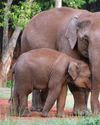
Big, Brilliant And Endangered
When one thinks of elephants, the first word that probably comes to mind is BIG! But elephants, while they may be the largest creatures on land, are not just big and powerful, they’re wise and sensitive as well. Recent scientific studies have established that they are among the most intelligent animals in the world.

Earth Manners
Everyday habits matter! Let’s be kind to the planet, animals and ourselves!
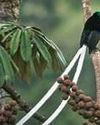
World Scan
CHINA’S IVORY TOWNAn explosive investigation by the Environmental Investigation Agency has revealed how criminal gangs originating from an obscure town in southern China have come to dominate the smuggling of ivory tusks poached from African elephants.